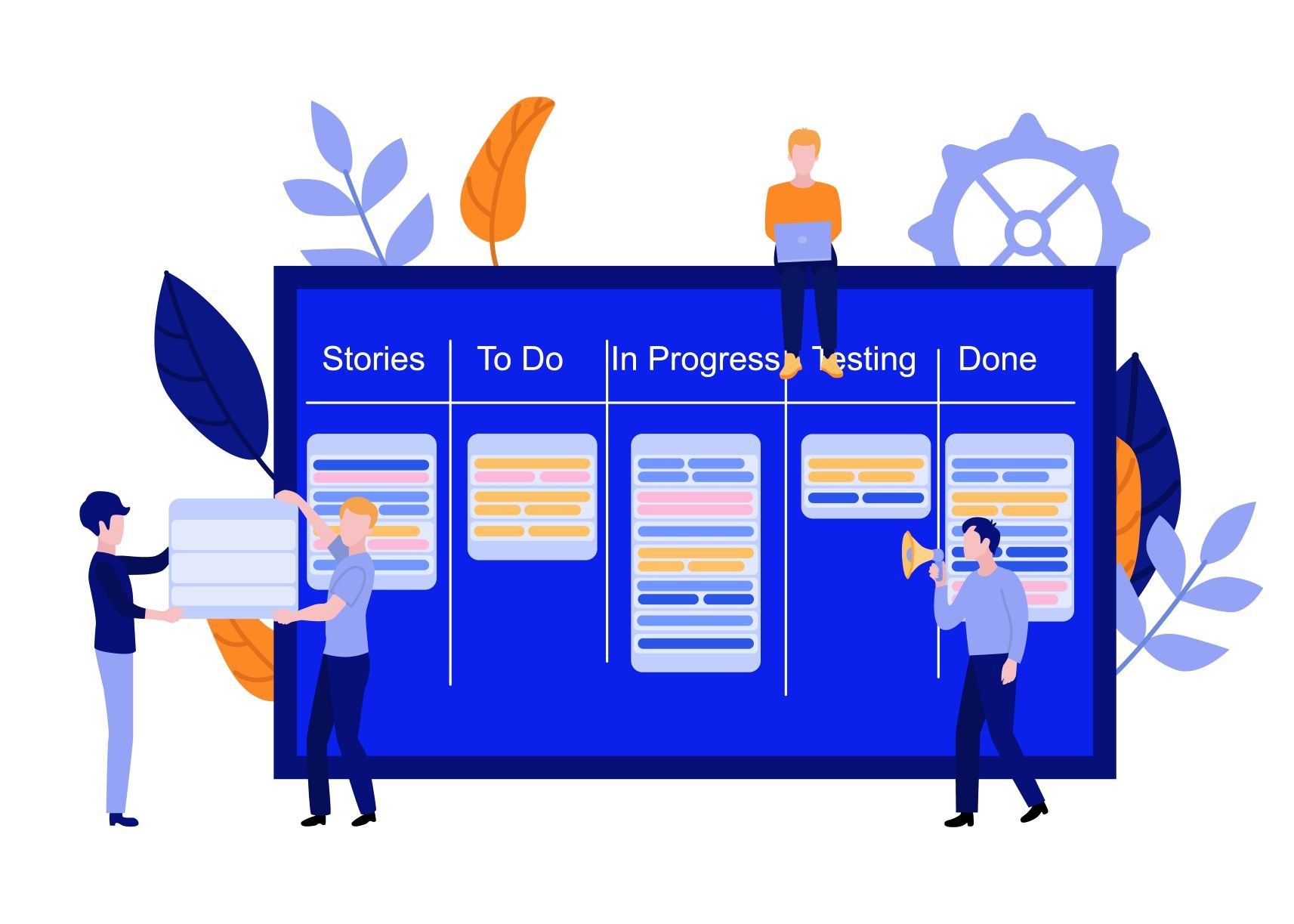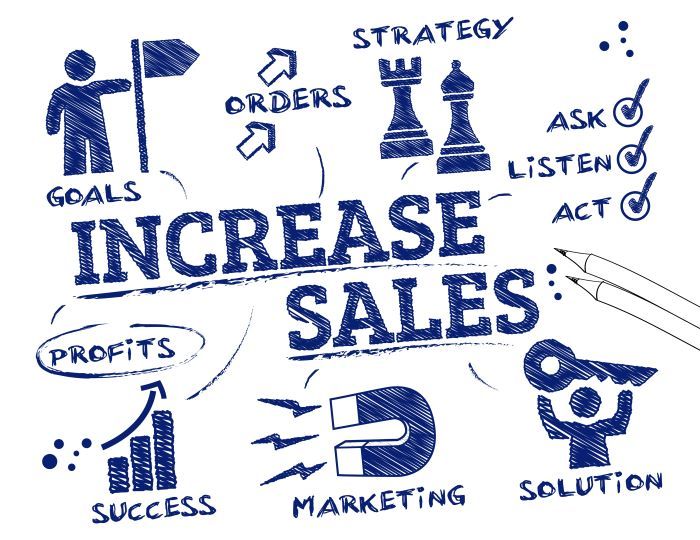by Chad Lukens
•
23 Dec, 2022
Intro to agile Marketing Agile marketing is a modern approach to marketing that focuses on speed, flexibility, and responsiveness. It combines traditional marketing tactics with the latest tools and techniques to enable companies to quickly adapt to changes in customer demands. Agile marketing is becoming increasingly popular amongst businesses as it helps them become more efficient and productive while also allowing them to capitalize on opportunities as they arise. In this article, we will discuss what Agile Marketing is, its benefits for businesses, and how it can help you increase sales. What is Agile Marketing At the core of agile marketing is an iterative workflow which relies on continuous collaboration among teams, rapid prototyping, and regular testing and optimization. This enables companies to respond quickly to fluctuations in the market or customer behavior without having to start from scratch each time. Agile marketing also promotes experimentation and creative problem-solving, allowing teams to take risks without sacrificing long-term objectives. Unlike traditional methods of marketing which can be rigid and slow, agile focuses on responding quickly with tailored solutions for each customer’s needs. By using smaller batches of work instead of large projects, agile marketers can test different approaches rapidly and make necessary changes before committing too much resources. Additionally, since agile teams are more collaborative than their traditional counterparts, they have better access to data which can be used for deeper insights into customer behavior and preferences. Overall, agile marketing offers businesses a more flexible way of managing their campaigns while still achieving long-term growth objectives. By streamlining processes and automating laborious tasks like data analysis and reporting, it allows teams to focus their energy on creating innovative solutions that will help them stay ahead of the competition. Furthermore, its iterative approach ensures that any changes made are based on real-time feedback from customers so they can be sure they are making the right decisions at the right time. Benefits of Agile Marketing Agile marketing can bring a number of benefits for businesses, helping them become more efficient and productive. One of the main advantages is that it allows companies to quickly respond to changes in customer demand without sacrificing long-term objectives. By using smaller batches of work instead of large projects, agile marketers can test different approaches rapidly and make necessary changes before committing too much resources. This helps them save time and money while still achieving their goals. Another benefit is increased collaboration between teams. Agile marketing relies heavily on team-oriented strategies which encourages collaboration across all departments. This ensures that everyone has access to data which can then be used to understand customer behavior and preferences better in order to create tailored solutions for each situation. It also makes it easier for teams to spot opportunities quickly and take advantage of them when they arise. In addition, agile marketing promotes experimentation and creative problem-solving. With traditional methods, there is a risk of getting stuck in a rut by repeating the same processes over again without taking into account new trends or developments in the market. Agile teams have better access to data which helps them stay ahead of the competition by spotting emerging trends in real time and adjusting their strategies accordingly. They also have more freedom to take risks without worrying about sacrificing long-term objectives since any changes made are based on real-time feedback from customers so they can make sure they are making the right decisions at the right time. Lastly, agile marketing streamlines processes and automates laborious tasks like data analysis and reporting so teams can focus their energy on creating innovative solutions that will help them stay ahead of their competitors. By eliminating wasted effort, businesses can free up more resources that can be allocated elsewhere, allowing them to increase efficiency while still achieving their growth objectives with speed and accuracy. Overall, agile marketing offers businesses numerous advantages over traditional methods such as greater efficiency, improved collaboration between teams, increased flexibility when responding to changes in customer demands, enhanced creativity through experimentation, streamlined processes through automation, and ultimately faster results with higher accuracy overall. As such, agile marketing has become an increasingly popular approach amongst businesses looking to revolutionize their operations and strengthen their competitive edge in the modern world. The big boys are using it, so should you ! One of the most successful companies that have successfully implemented an agile marketing strategy is Amazon. By capitalizing on customer feedback, the company was able to quickly respond to customer needs and preferences, making it possible for them to stay ahead of the competition. They also embraced data-driven marketing, utilizing customer analytics to better understand their customers and develop targeted marketing campaigns that were more effective at reaching their target audience. Target is another great example of a company utilizing agile marketing. As part of its strategy, Target uses predictive analytics and personalization technology to create campaigns catered specifically to individual shoppers’ interests or needs. This helps them create highly effective campaigns that are tailored specifically to each customer’s preferences, making it easier for them to convert leads into sales. Similarly, Nike has been able to leverage its agile marketing practices by combining market research and customer feedback with real-time data analysis. By using these tools together, they are able to quickly identify trends in consumer behavior and adjust their strategies accordingly in order to maximize results. This helps ensure they continue delivering products consumers want while staying ahead of any changes in demand or competition activity over time. Dunkin' Donuts is another great example of a company successfully leveraging agile approaches for their marketing efforts. By understanding current trends in consumer behavior, Dunkin' Donuts created targeted campaigns featuring personalized offers geared towards individual customers—such as offering discounts focused on the day's weather or upcoming holidays—which helped increase engagement and drive sales for their products. These examples demonstrate how successful companies have utilized agile strategies for their marketing efforts in order to remain competitive and deliver higher returns on investment through improved efficiency and effectiveness when compared with traditional methods used by many businesses today. By taking advantage of data-driven decision making, personalization technology, real-time insights from customer feedback and analytics tools, businesses can quickly adapt their strategies as needed based on changing market conditions while still achieving desired results over time. These examples demonstrate how successful companies have utilized agile strategies for their marketing efforts in order to remain competitive and deliver higher returns on investment through improved efficiency and effectiveness when compared with traditional methods used by many businesses today. By taking advantage of data-driven decision making, personalization technology, real-time insights from customer feedback and analytics tools, businesses can quickly adapt their strategies as needed based on changing market conditions while still achieving desired results over time.




